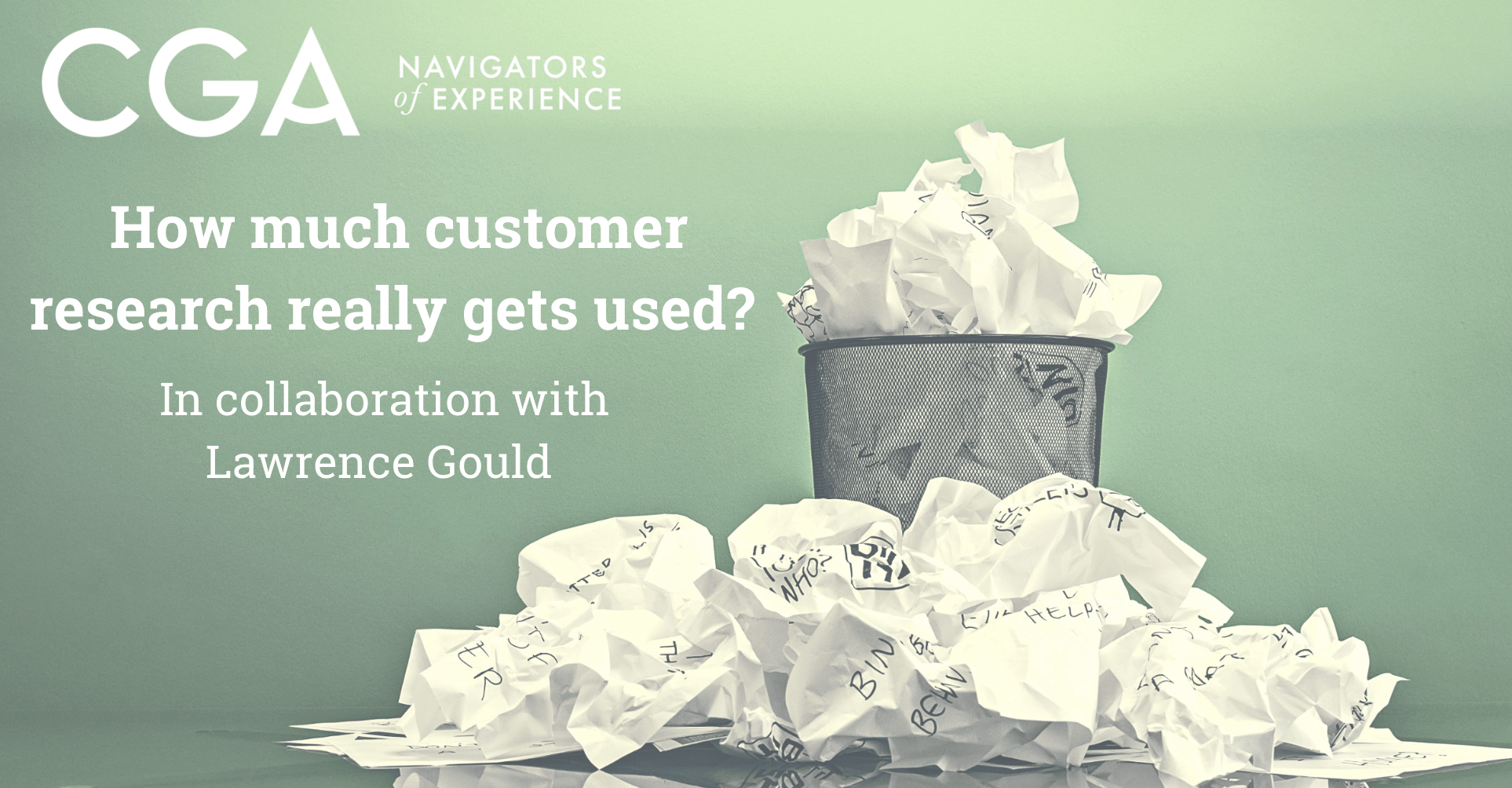
How much customer research really gets used?
At CGA one of the things we’re really passionate about is tying customer insights to action. It’s not enough to do research and present it on a nice Powerpoint – what are you going to do with it? That means understanding two things:
1) What you need to be able to do with the resulting insight
2) Really appreciating the maturity and relevance of those insights to your organisation to make sure you’re really capable of taking action on it
We discussed these pivotal points with friend of CGA, Lawrence Gould, whose litany of credentials includes his most recent role as Head of Consumer Insights, Experience Strategy and Innovation at Samsung Electronics, before which he was Business Intelligence Manager at Coca-Cola Enterprises.
If you’re not going to take action on insight, what’s the point?
“The starting point with my whole approach to consumer insights, is that consumers, stakeholders – the client – tend to tell you what they want, but more often than not it’s actually not what they need.” says Lawrence.
Take the real life example of a customer survey from an energy company exploring the move for whole streets, villages and towns to new heating systems. One of the questions asked: ‘how long would you be prepared to be without heating or hot water to move to a more environmentally friendly, lower energy option such as a heat pump or solar panels?’
The question effectively asks, how bad are you prepared for the experience to be before it’s a problem? It should be looking at solutions. The implication is that the solution itself is inadequate and as a result, the research is going to end up costing a lot but not achieving anything useful.
Is your company capable of actioning insights?
“If you’re designing a piece of consumer research for whatever reason, and you want to make it usable, you’re actually doing two sets. The first is with your target end user – you have to understand them to ask the right questions. The second is with your stakeholders, which includes understanding what their constraints, drivers, and real capabilities are.” says Lawrence.
Key to this is understanding who your research is actually for. Continuing with the heating example, the end user wants you to turn up and by the time you leave, the heating works, ideally they’re better off than they were before, you haven’t caused stress and anxiety, and they don’t feel like they’re being ripped off. At the company end, there’s someone with a KPI to install X number of new heating solutions because that’s the reality of what they’re being paid for. You need to design research that speaks to both ends of that experience, which makes the scoping phase of consumer research – establishing the purpose and your capabilities – essential.
The good news is that you will most likely be looking for the answer to just one or two questions rather than having as much data as humanly possible. The difficulty is that while most people are focused on asking the questions, what’s actually important is putting time and energy into understanding what question to actually ask. It’s rather like doing the design of a house – you think the work is in the build but if you haven’t got the design right (or if you haven’t got a design at all) then you’re never going to get the house you want.
At CGA we work with clients to challenge insight teams and insight gathering processes, ensuring they’re fit for purpose and provide meaningful return on investment, identifying commercial opportunities that really resonate with customers, your organisation’s ability to act upon them, and ultimately building both long and short-term success. If you would like to find out more about how we can help your business understand your customers better and navigate those insights for strong commercial outcomes, get in touch and let’s start a conversation.

 by ForgetWP®
by ForgetWP®